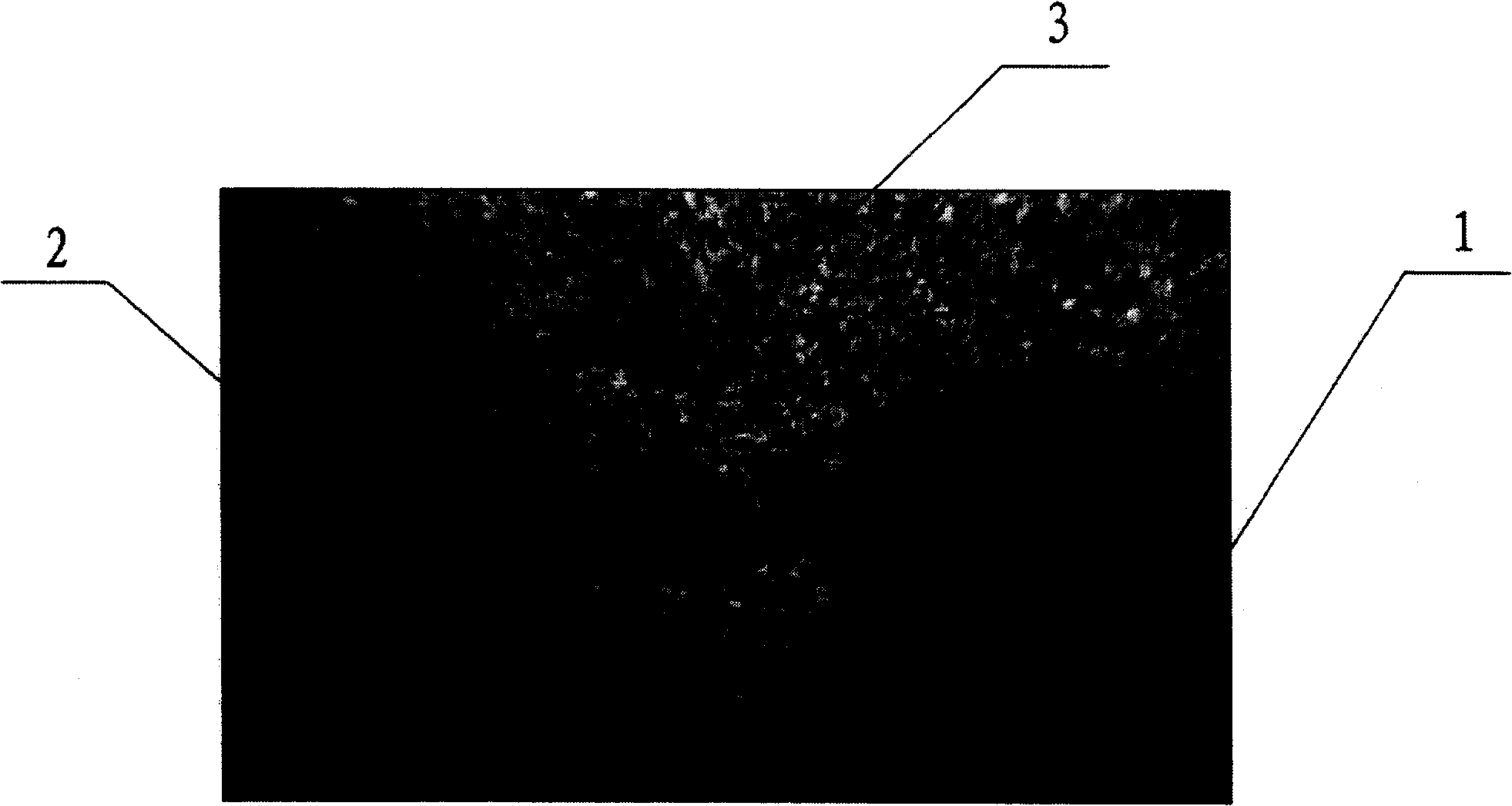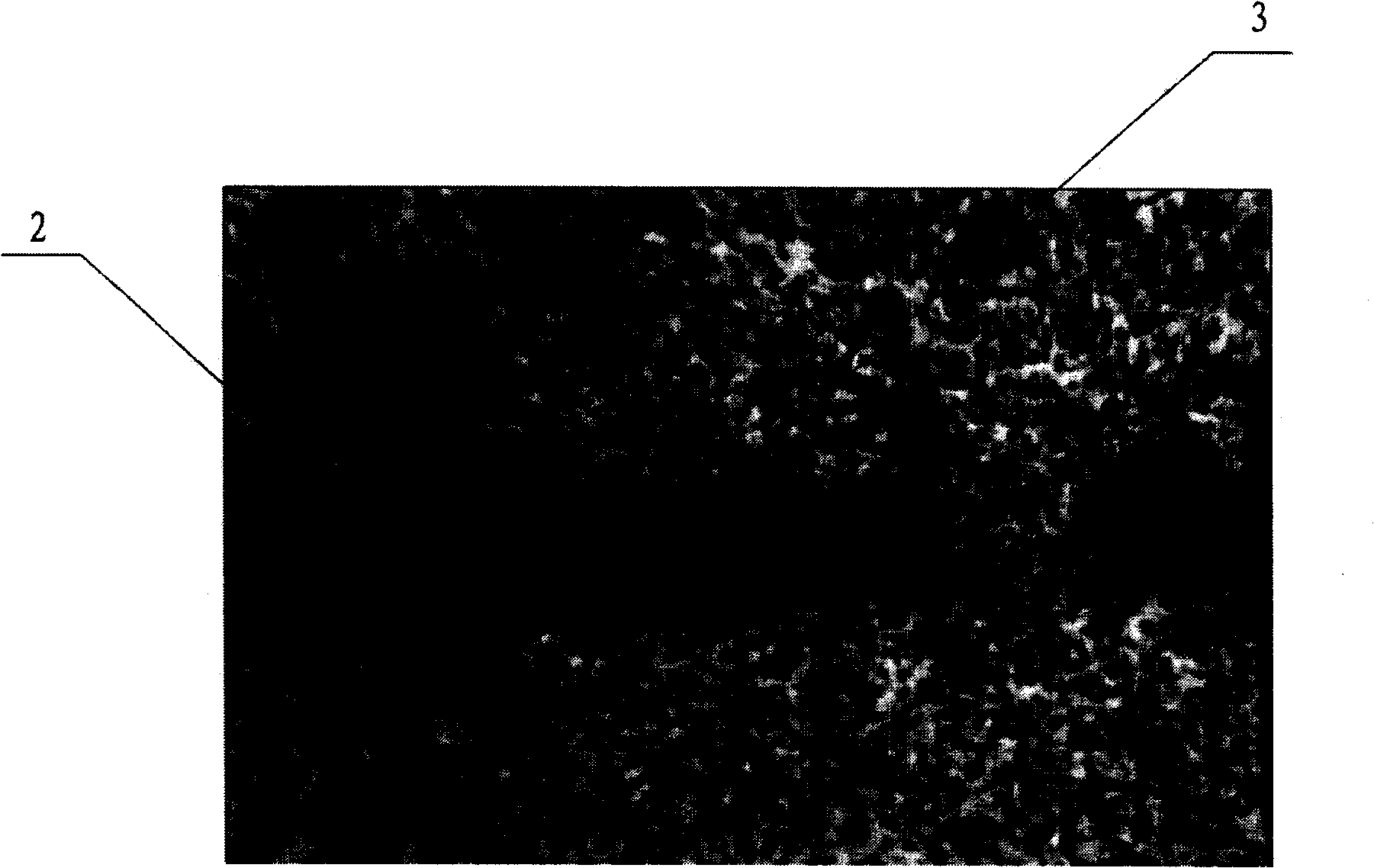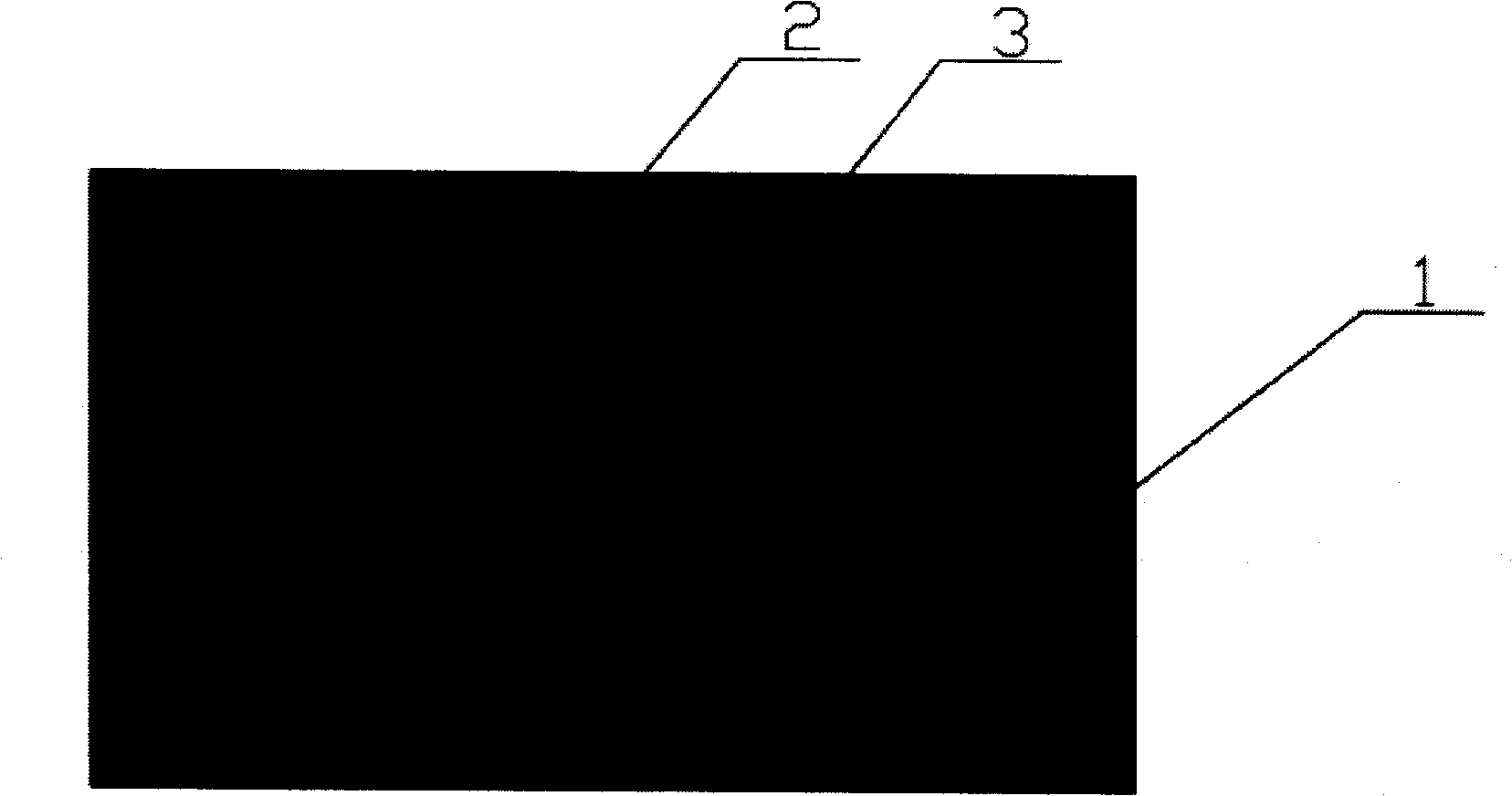Genuine-fake identification method for laser holographic plate-making
A laser holography, authenticity technology, applied in the field of anti-counterfeiting, can solve the problems of difficult details or authenticity identification of technical parameters, lack of quantification, easy to be deciphered, etc., to achieve the effect of simple and easy identification method and low cost
- Summary
- Abstract
- Description
- Claims
- Application Information
AI Technical Summary
Problems solved by technology
Method used
Image
Examples
Embodiment 1
[0044] Use electron beam scanning to obtain a row of Chinese character information positioning reference masks with a height of 0.1mm and a length of 10mm, and use a single laser beam with a wavelength of 441.6nm to perform optical copying on the photoresist photosensitive material, and the exposure amount is 100mJ / cm2; Control the average diameter of the speckle to 0.02mm, record holographically, and the exposure amount is 50mJ / cm2. The subsequent preparation process includes development, electroforming, hot pressing and other processes to produce a holographic master. A CCD is placed at the image plane of the 100X magnified optical path to record a standardized phase image of the set area, and the image pixels are 2048×1536. Color inkjet printer output images (such as figure 1 , 2 shown). The reproduction is made by molded reproduction, and its partially enlarged schematic diagram is as follows image 3 , 4 As shown in the identification, use a 40 times magnifying glass ...
Embodiment 2
[0046] See attached Figure 5 , 6 , and the difference from Example 1 is: the average diameter of the control speckle is 0.05mm; the standardized phase image is stored in digital form; the replica is made by laser copying, and its partial enlarged schematic diagram is as follows Figure 7 , 8 As shown, when identifying, place a CCD at the image plane of the 100X magnified optical path to obtain a digital image of the set area of the sample to be inspected, and use a traditionally called "pattern recognition" program to compare the correlation with the standardized phase image to identify authenticity , identified by the program, Figure 8 and Figure 6 A correlation coefficient greater than 0.9 indicates a true replica.
PUM
| Property | Measurement | Unit |
|---|---|---|
| size | aaaaa | aaaaa |
Abstract
Description
Claims
Application Information
 Login to View More
Login to View More - Generate Ideas
- Intellectual Property
- Life Sciences
- Materials
- Tech Scout
- Unparalleled Data Quality
- Higher Quality Content
- 60% Fewer Hallucinations
Browse by: Latest US Patents, China's latest patents, Technical Efficacy Thesaurus, Application Domain, Technology Topic, Popular Technical Reports.
© 2025 PatSnap. All rights reserved.Legal|Privacy policy|Modern Slavery Act Transparency Statement|Sitemap|About US| Contact US: help@patsnap.com



